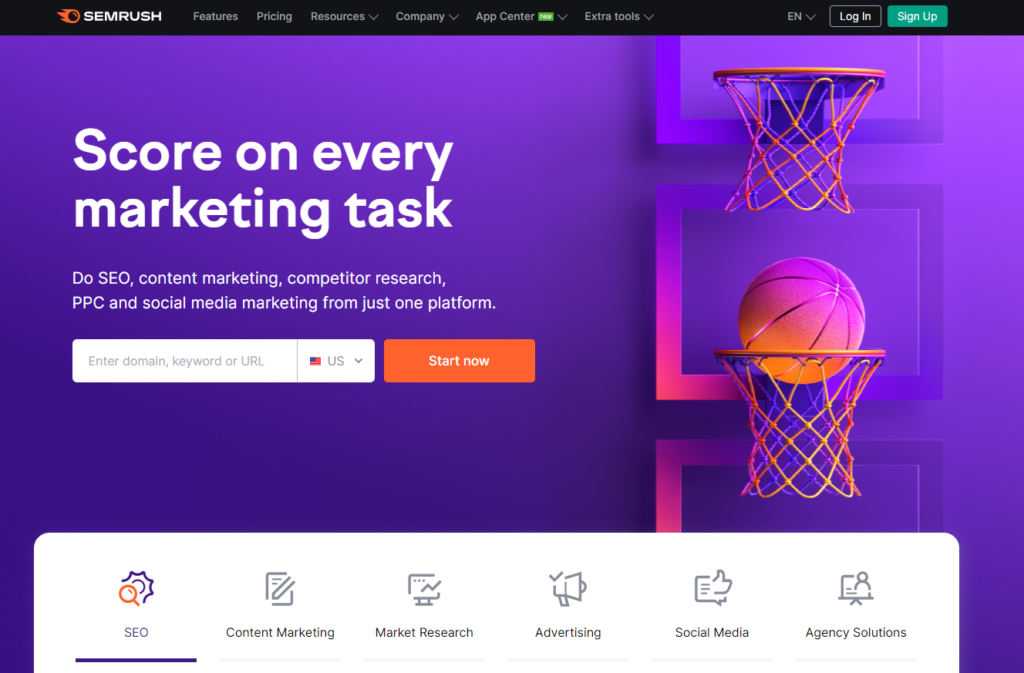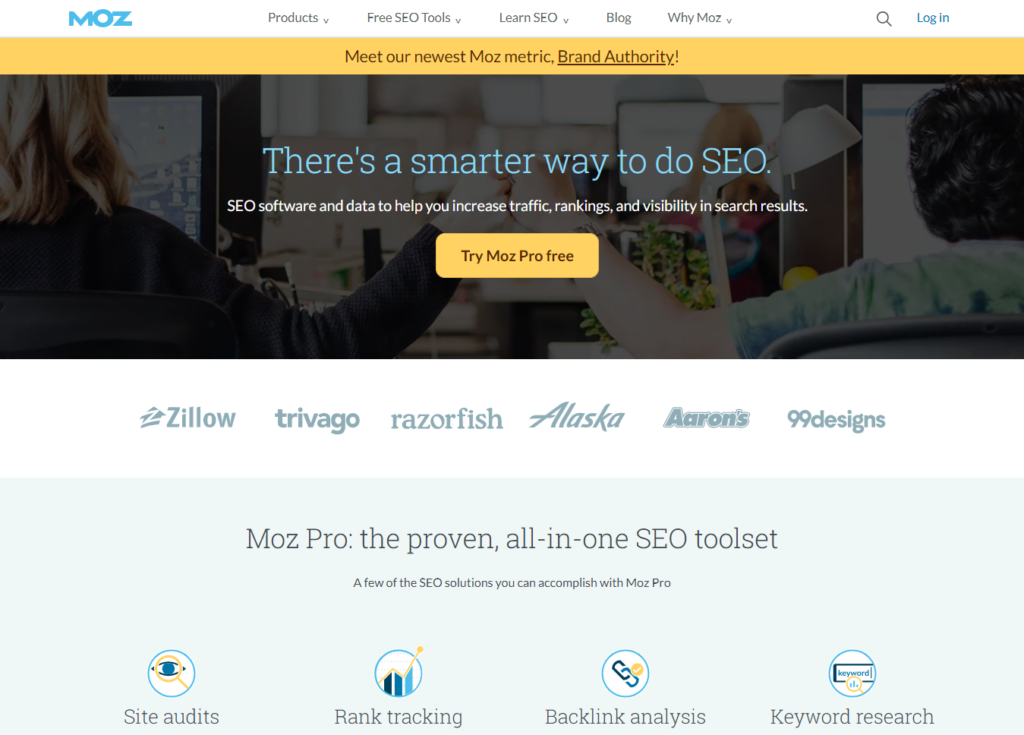13 Profitable Blogging Tips for Beginners in 2024

Are you ready to turn your passion into profit and embark on an exciting journey in the blogosphere?
In this blog post, we’re diving headfirst into the dynamic world of blogging.
Whether you’re a newbie or have dipped your toes in the blogging waters, this post is your ultimate guide to crafting a successful blog in the ever-evolving landscape of 2024.
From uncovering niche secrets to mastering SEO, we’re delving into the strategies, techniques, and tools that will help you transform your blogging dreams into a lucrative reality.
So, if you’re itching to start a blog, boost your existing one, or simply curious about the ins and outs of beginner blogging, stick around, because we’re about to unlock the doors to digital success!
13 Blogging Tips for Beginners
Now for the important part – the 13 blogging tips that will serve as your roadmap to success in the blogosphere.
We’ll be talking about these actionable strategies, which are designed to take your blog from zero to hero, even if you’re just starting.
Now, let’s get into the nitty-gritty of each tip, unraveling the secrets to profitable blogging for beginners in 2024.
1. Identify a Niche Aligned With Your Expertise
Selecting the right niche for your blog is akin to choosing the foundation for a house; it’s the cornerstone of your blogging journey.
To embark on this crucial step, it’s essential to find a niche that not only aligns with your skills and interests but also harbors the potential for monetization.
Here are 5 popular blogging niches:
1. Business: If you possess expertise in entrepreneurship, marketing, or finance, consider launching a blog dedicated to all things business. Here, you can share valuable insights, practical tips, and successful strategies that resonate with fellow entrepreneurs and professionals, ultimately positioning yourself as an authority in your niche.
2. Fitness: For those passionate about health and fitness, a niche in this realm can flourish. Your blog can become a hub for workout routines, nutritional guidance, and wellness advice, helping readers on their journey to improved health and physical well-being.
3. Travel: If you’re an intrepid explorer with a talent for storytelling and photography, a travel blog could be your canvas. Share your globetrotting adventures, create comprehensive travel guides, and offer savvy travel hacks to inspire and assist others in venturing across the globe.
4. Food and Cooking: Culinary aficionados and home cooks can carve out a delectable niche in the food blogging world. Here, you can dish up mouthwatering recipes, delve into cooking techniques, and provide reviews of culinary establishments, delighting the palates of food enthusiasts.
5. Lifestyle: For those whose interests span a wide spectrum, a lifestyle blog offers the flexibility to cover a range of topics, from fashion and home decor to personal development and travel. This niche allows you to share your multifaceted passions and expertise while catering to an audience with diverse interests.
Remember, your chosen niche should not only reflect your passion and expertise but also resonate with an audience willing to engage with your content.
Furthermore, it should hold the potential for monetization through avenues like affiliate marketing, sponsored posts, or the sale of related products or services. In essence, your niche is the compass that will guide your blogging journey toward success.
2. Research Your Target Audience
Understanding your audience goes beyond intuition; it’s an art and science. In the quest to connect with your readers, tools like SEMrush and Moz become your compasses in the digital wilderness.
Market Research Tools: SEMrush and Moz are your trusty companions in this journey. They offer insights into keyword trends, competitor analysis, and backlink data, helping you decipher the digital landscape within your chosen niche. SEMrush’s comprehensive keyword research and Moz’s domain authority metrics can be invaluable.


But it’s not just about data; it’s about people. Imagine your ideal viewer or reader. What keeps them up at night? What challenges do they face? What questions plague their minds? To truly connect, you need to walk in their shoes, feel their pain points, and envision how your blog can be their problem solver.
Let’s say your blog is about fitness, and your ideal viewer is a busy professional struggling to find time for workouts. Knowing this, you can create content tailored to their needs, such as quick home workouts or time-efficient fitness tips.
By empathizing with your audience and providing solutions to their real-life problems, you establish trust and credibility, turning casual readers into loyal followers.
3. Know Your Blogging Goals
Before you embark on your blogging journey in 2024, it’s imperative to set clear and well-defined goals. Knowing your blogging goals will not only keep you focused but also provide a roadmap to success.
Start by asking yourself: What do you aim to achieve with your blog? Are you looking to generate income, build a personal brand, share your expertise, or connect with a specific community? Your goals will determine the direction and strategy of your blog.
For instance, if your primary goal is to generate income, your strategies may include monetization methods like affiliate marketing, sponsored content, or selling your products or services. On the other hand, if building a personal brand is your focus, you might concentrate on content that showcases your expertise and unique voice.
Furthermore, it’s essential to set measurable objectives. Instead of vague goals like “increase traffic,” aim for specific metrics like “double website traffic within six months” or “gain 1,000 email subscribers by the end of the year.” These quantifiable targets will help you track your progress and adjust your strategies as needed.
Remember that your blogging goals are not set in stone; they can evolve as your blog grows. Regularly revisit and reassess your goals to ensure they align with your current priorities and aspirations. Knowing your blogging goals is like having a compass guiding you through the ever-changing landscape of the blogosphere, helping you stay on course toward achieving your vision.
4. Pick the Right Blogging Platform
Selecting the right blogging platform is a pivotal decision that significantly shapes your blogging journey.
It’s essential for various reasons, such as aligning with your technical proficiency, scalability as your blog grows, customization options for branding, and flexibility for monetization.
Among the various platforms, WordPress shines as a top choice.
Why WordPress?

It offers versatility for bloggers of all levels with customizable themes and plugins, SEO-friendliness for better visibility, a large supportive community, and scalability.
Successful bloggers like Neil Patel, Adam Enfroy, and Syed Balkhi (WPBeginner) use WordPress, underlining its reliability and adaptability for successful blogging across diverse niches.
5. Implement SEO Practises
In the ever-competitive digital landscape, SEO (Search Engine Optimization) is the compass that can guide your blog toward higher visibility, more traffic, and ultimately, greater success. Implementing SEO practices involves several key components:

On-Page SEO: On-page SEO is the art of optimizing individual web pages to rank higher and earn more relevant traffic in search engines. This includes strategically placing keywords, using descriptive headings (like bold text), optimizing meta titles and descriptions, and ensuring your content is well-structured and user-friendly.
To enhance your on-page SEO, consider using tools like SEO Surfer, which can provide data-driven insights to improve your on-page optimization.
Off-Page SEO: Off-page SEO encompasses all activities you do outside of your website to improve its search engine rankings. This includes building a strong online presence through social media, guest blogging, influencer outreach, and garnering high-quality backlinks from reputable websites.
Off-page SEO helps search engines understand the authority, relevance, and credibility of your blog.
Different Types of SEO:
- Technical SEO: Focusing on website infrastructure, speed, and crawlability.
- Local SEO: Optimizing your blog for local search, is crucial for businesses targeting a specific geographic area.
- Mobile SEO: Ensuring your blog is mobile-friendly and accessible on various devices.
- Voice Search SEO: As voice-assisted devices become more popular, optimizing for voice search is increasingly important.
- Video SEO: If your blog incorporates videos, optimizing them for search engines can boost visibility.
Link-Building: Building high-quality backlinks (links from other websites to yours) through link-building is a fundamental aspect of off-page SEO and deserves special attention. Not all links are created equal; quality matters more than quantity.
Aim for links from authoritative and relevant websites within your niche. These backlinks signal to search engines that your content is valuable and trustworthy.
6. Create a Content Schedule and Write Consistently
Consistency is the heartbeat of a successful blog. To maintain a steady flow of engaging content, it’s crucial to create a content schedule and stick to it. Here’s how to go about it:
Content Calendar: A content calendar is your blogging roadmap. It’s a visual representation of what you plan to publish and when. Start by determining your posting frequency – whether it’s daily, weekly, bi-weekly, or monthly. Then, plan your content topics and titles, ensuring they align with your blogging goals and audience interests.
Take the time to plan your content strategically. Consider seasonal trends, holidays, and industry events that might be relevant to your niche.
Ensure a healthy mix of evergreen content (timeless articles) and trending or topical pieces. Additionally, factor in time for research, writing, editing, and promoting your content on social media and other channels.
Consistency is not just about posting on a regular schedule; it’s also about maintaining the quality of your content. Rushed, poorly researched posts can harm your blog’s reputation.
Therefore, find a balance between frequency and quality that works for you. If you find it challenging to maintain consistency on your own, consider collaborating with guest bloggers or hiring freelance writers to help keep your content calendar on track.
7. Do Keyword Research
Keyword research is your strategic compass in the world of blogging, guiding you toward creating content that resonates with your audience. Tools like Ahrefs and SEMrush are your allies in this quest.
How They Work:
- Keyword Discovery: Enter a seed keyword or topic related to your blog’s niche. These tools will generate a list of related keywords along with important data such as search volume (how often a keyword is searched), keyword difficulty (how competitive it is to rank for a specific keyword), and related keyword ideas.
- Competitor Analysis: You can also use these tools to spy on your competitors. Input their website or content URLs, and you’ll get insights into the keywords they’re ranking for, allowing you to identify gaps and opportunities.
- Content Ideas: Beyond keywords, these tools can suggest content ideas based on popular search queries. This helps you create content that aligns with current trends and audience interests.
Armed with your keyword insights, you can craft content that aligns with your audience’s interests. Ensure you integrate keywords naturally, enhancing the reader’s experience without overloading your content.
For example, suppose your research highlights “best home workouts” as a high-demand keyword in the fitness niche. In that case, you can create a detailed article titled “The Ultimate Guide to the Best Home Workouts,” increasing your chances of ranking higher in search engine results.
Remember, keyword research is an ongoing process. Continuously revisit your research tools to uncover new opportunities and track the performance of existing content. By harnessing these tools effectively, you can keep your blog relevant and attract a consistent flow of organic traffic from search engines.
8. Write on Low Competition Topics
In the quest for blogging success, targeting low-competition topics is akin to finding hidden treasures in the vast sea of content. Here’s how to uncover these gems using keyword research tools like Ahrefs and SEMrush:
Using Keyword Difficulty (KD): Keyword Difficulty (KD) is a metric provided by these tools that indicates how challenging it is to rank for a particular keyword. To find low-competition topics, follow these steps:
- Start with Seed Keywords: Begin by entering seed keywords or broad topics related to your niche into the research tool.
- Sort by KD: Filter or sort the keyword results by their Keyword Difficulty, typically on a scale from 0 to 100. Keywords with lower KD scores are less competitive.
- Explore Keyword Variations: Look for long-tail keywords or keyword variations with low KD scores. These are often less competitive and can be your entry point into a niche.
- Consider Search Volume: While targeting low-competition keywords is vital, also ensure they have a decent search volume. This means that people are actively searching for content related to these keywords.
- Analyze SERP (Search Engine Results Page): Examine the current top-ranking pages for your chosen keyword. Are they from authoritative websites? If yes, it might be a sign of tougher competition. Conversely, if you see weaker websites ranking at the top, it could be an opportunity to outperform them.
- Evaluate User Intent: Make sure the keyword aligns with the intent of your audience. High competition or low, relevance to your readers is paramount.
For example, if you have a technology blog, instead of targeting a highly competitive keyword like “smartphones,” you might discover a lower competition keyword like “best budget Android phones under $300.” This specific long-tail keyword not only has lower competition but also addresses a more targeted audience looking for affordable smartphone options.
9. Think Long Term
Blogging success is a marathon, not a sprint. It’s imperative to adopt a long-term perspective for your blog’s growth and sustainability. Here’s why it’s crucial:
Be in It for the Long Term: Building a successful blog requires patience and persistence. Understand that achieving your blogging goals may not happen overnight. It’s essential to commit to your blog for the long haul, even when results may seem slow to materialize.
Plan for the Long Term: Instead of seeking instant gratification or quick money-making schemes, focus on creating a solid foundation for your blog. Develop a comprehensive, long-term strategy that includes content planning, audience engagement, and monetization plans.
Building a Business Takes Time: A blog is not just a hobby; it’s a business. And like any business, it takes time to establish, grow, and generate significant income. Recognize that success might come in phases – from the initial struggle to steady growth and, eventually, financial stability.
Building Trust and Authority: Over time, as you consistently provide valuable content and engage with your audience, you’ll build trust and authority within your niche. This trust is invaluable for attracting loyal readers and converting them into customers or clients.
Adapting to Changes: The digital landscape, including search engine algorithms and user behaviors, is constantly evolving. A long-term perspective allows you to adapt to these changes and stay relevant in your niche.
Remember, all successful bloggers don’t achieve their goals overnight. They persisted through challenges, adapted to changes, and kept their eyes on the long-term prize. Whether your goal is to monetize your blog, establish a personal brand, or share your expertise, long-term thinking is the key to turning your blogging dreams into a sustainable and rewarding reality.
10. Create a Blog Newsletter
A blog newsletter serves as a potent tool for cultivating reader loyalty and boosting income. It fosters direct communication with your audience, allowing you to share exclusive content, updates, and insights, ultimately strengthening your connection with readers.
Moreover, newsletters offer lucrative monetization opportunities by promoting affiliate products, sponsored content, and your offerings to an engaged subscriber base. Featuring your latest blog posts in newsletters can also drive more traffic to your website, potentially increasing ad revenue and affiliate commissions.
How to Create a Blog Newsletter:
To create a blog newsletter, choose a reliable email marketing platform, set up opt-in forms on your blog, plan engaging content, maintain a consistent sending schedule, and actively promote your newsletter to your audience. This approach can help you maximize income while building reader loyalty over time.
11. Write Guest Posts
Guest posting involves creating content for other websites within your niche, typically with a link back to your blog. It’s a popular and effective method for building your blog’s authority and improving SEO.
Here’s how to do it:
- You can find opportunities: You can identify websites in your niche that accept guest contributions through online searches or directories.
- Pitch Your Idea: Craft a personalized pitch and propose a guest post idea that aligns with the target website’s content and audience.
- Create Valuable Content: Write a high-quality guest post that provides unique value to the target website’s readers, adhering to their guidelines.
- Include Backlinks: Incorporate relevant backlinks to your blog within the content for SEO benefit.
- Author Bio: Create a brief author bio with a link to your blog for readers to learn more about you.
- Engage with Readers: Respond to comments on the guest post to connect with the target website’s audience.
Guest posting is a win-win strategy that expands your blog’s reach while providing valuable content to other websites.
12. Always Provide Value to Your Audience First
Ensuring your blog consistently delivers value to your audience is paramount for long-term success.
This means creating content that genuinely addresses their needs, interests, and problems. When you provide value, you build trust, retain readers, and engage your audience more effectively.
Whether you aim to educate, entertain, inspire, or solve problems, the focus should always be on enriching your readers’ lives. In turn, this value-driven approach sets the stage for successful monetization and establishes your blog as a trusted resource in your niche.
13. Develop the Right Mindset
Cultivating the right mindset is the bedrock of a thriving blogging venture. Its significance lies in fostering discipline, motivating hard work, and grounding your expectations in reality.
Recognizing that blogging is not a quick route to immense wealth, but rather a journey requiring sustained effort and persistence, enables you to stay the course with consistency.
Your mindset, in essence, becomes the guiding force that charts the path to long-term success in the dynamic world of blogging. By maintaining a resilient mindset, you empower yourself to adapt, learn, and grow as you work toward achieving your blogging aspirations.
It’s the key to weathering challenges and ultimately realizing your full potential in the blogosphere.
FAQ
Conclusion
That’s it for the 13 blogging tips for beginners, thanks for making it to the end of the article.
Remember, don’t expect to make money overnight; consistency is key. Also, remember the significance of maintaining a positive and growth-oriented mindset.
The overall key to succeeding in anything in life, including blogging, lies in your mindset. Embrace a mindset of continuous learning, adaptability, and perseverance.
For more insights, check out these articles, 9 Profitable Ways to Monetize Your Blog as a Teen in 2024 and 13 Best Blogging Courses in 2024 (Free and Paid).
Thanks for making it to the end, and I wish you luck on your blogging journey.







There’s certainly a great deal to learn about this
topic. I love all of the points you have made.
I appreciate the support!